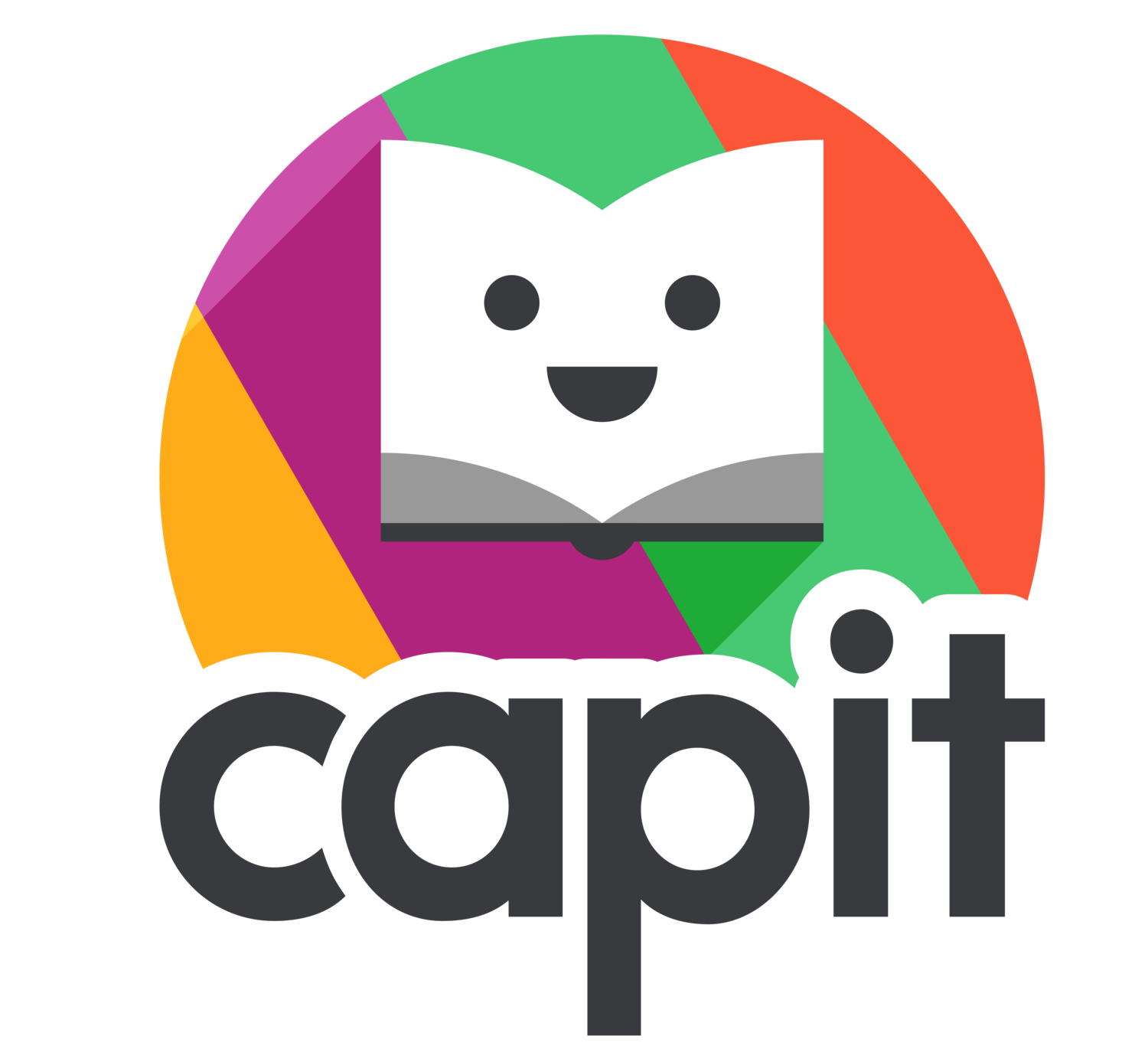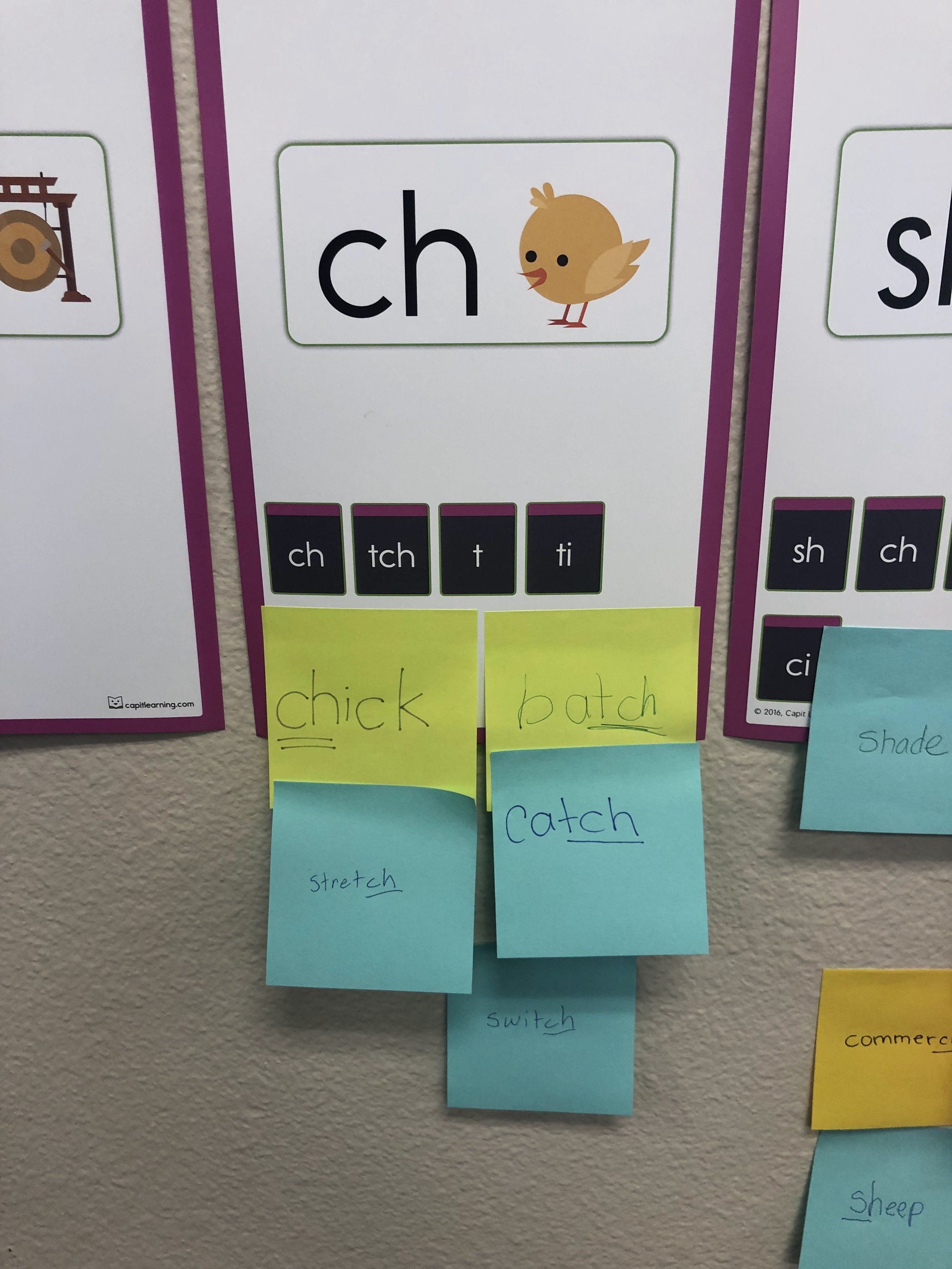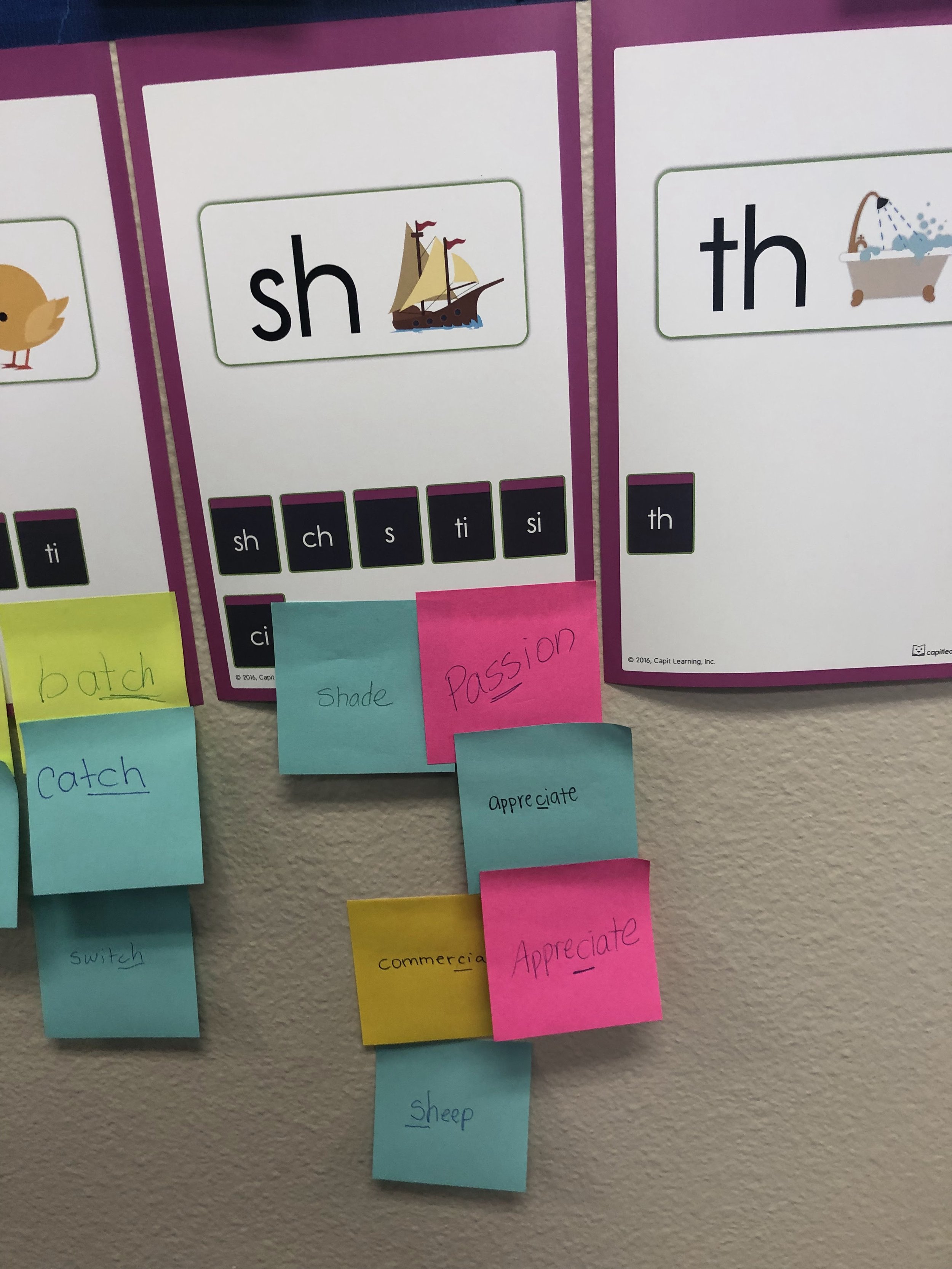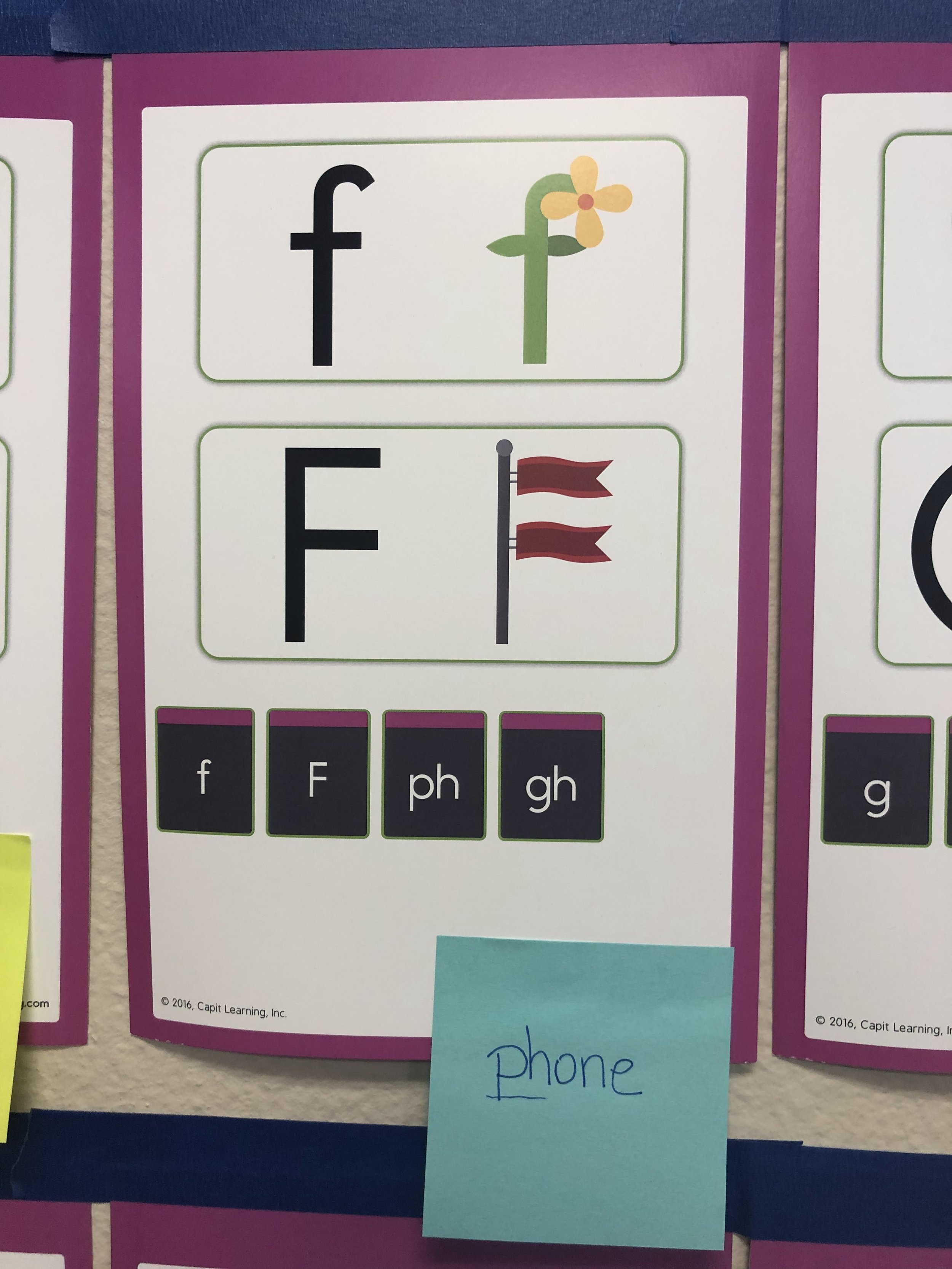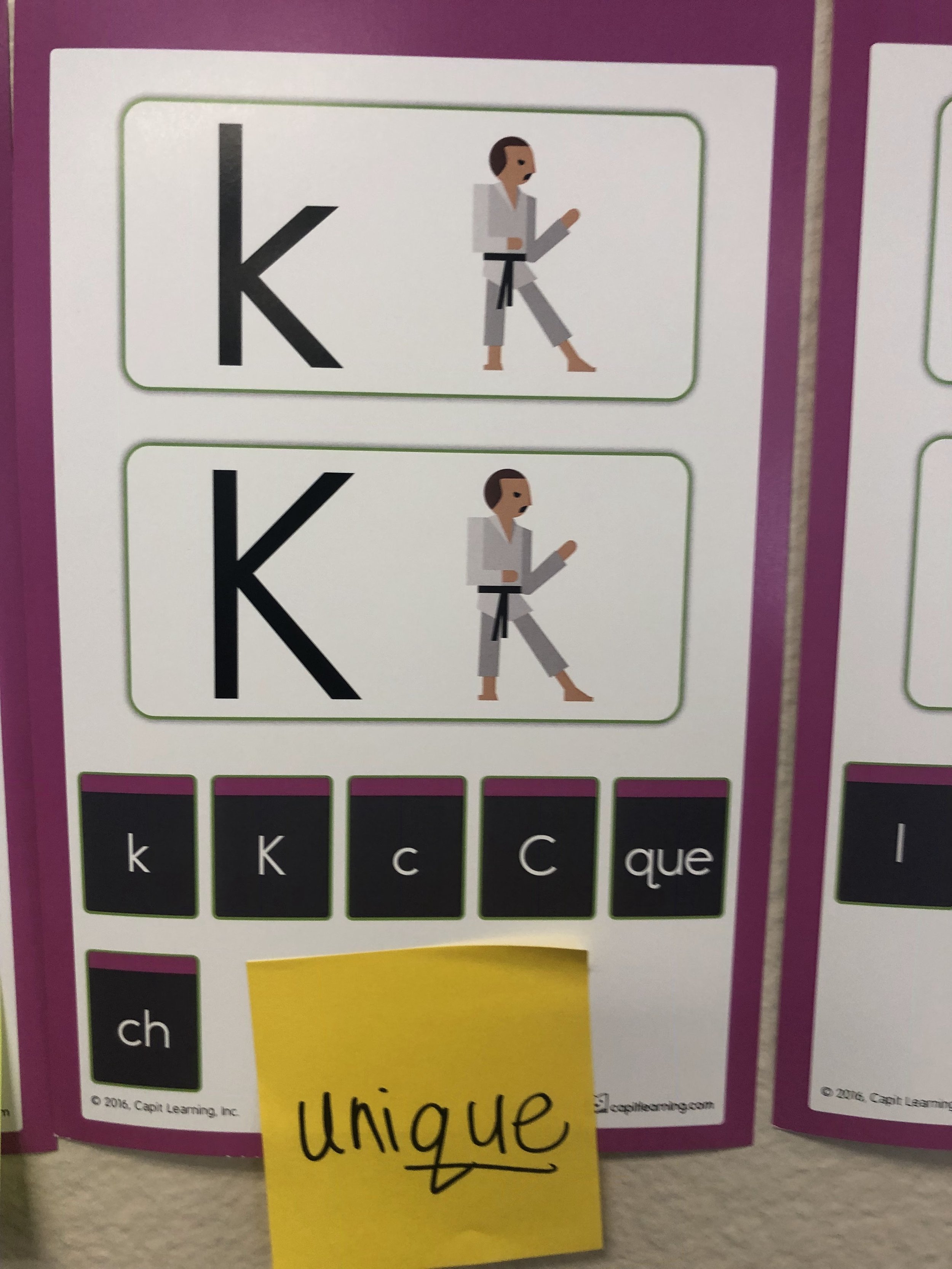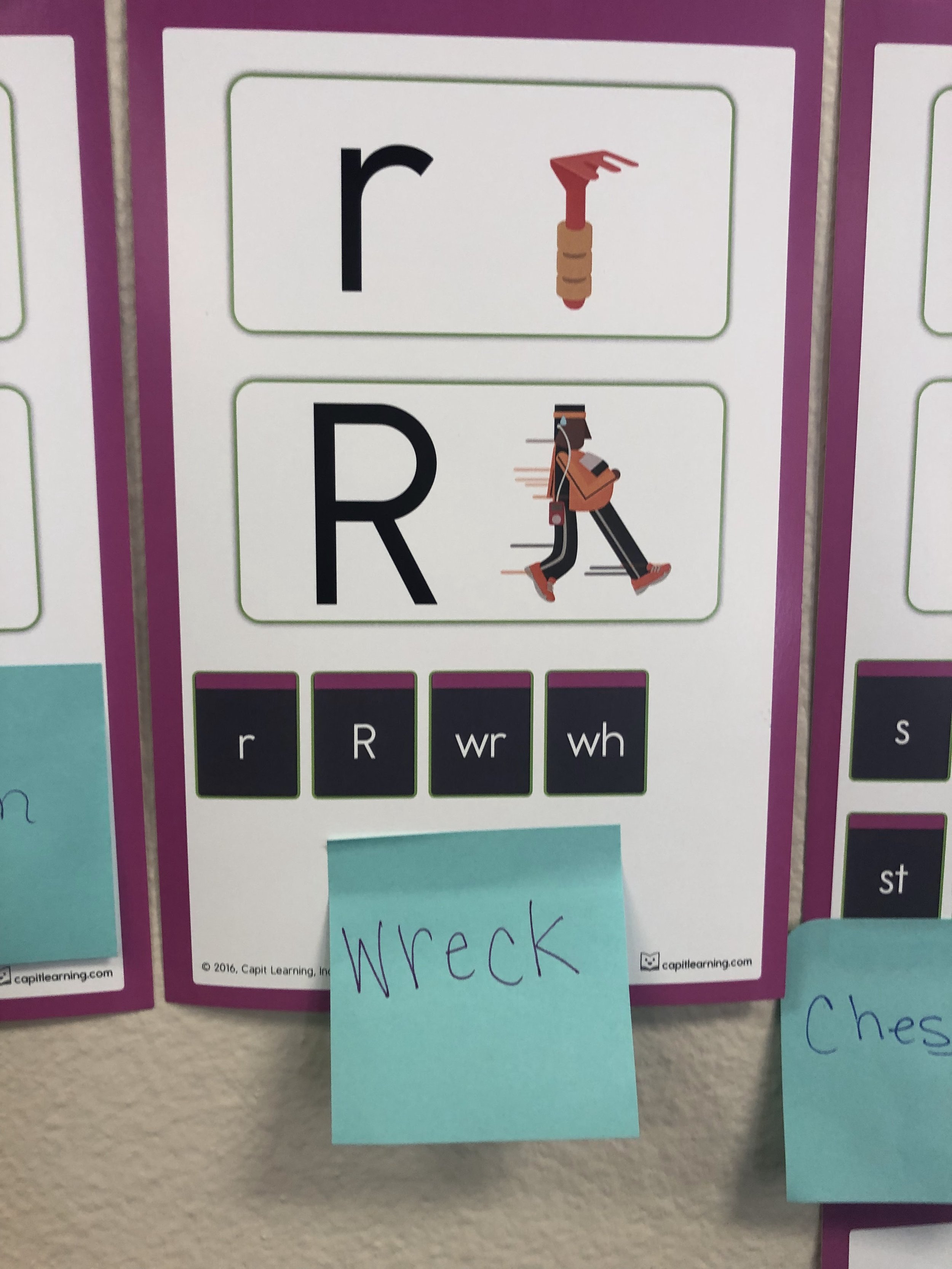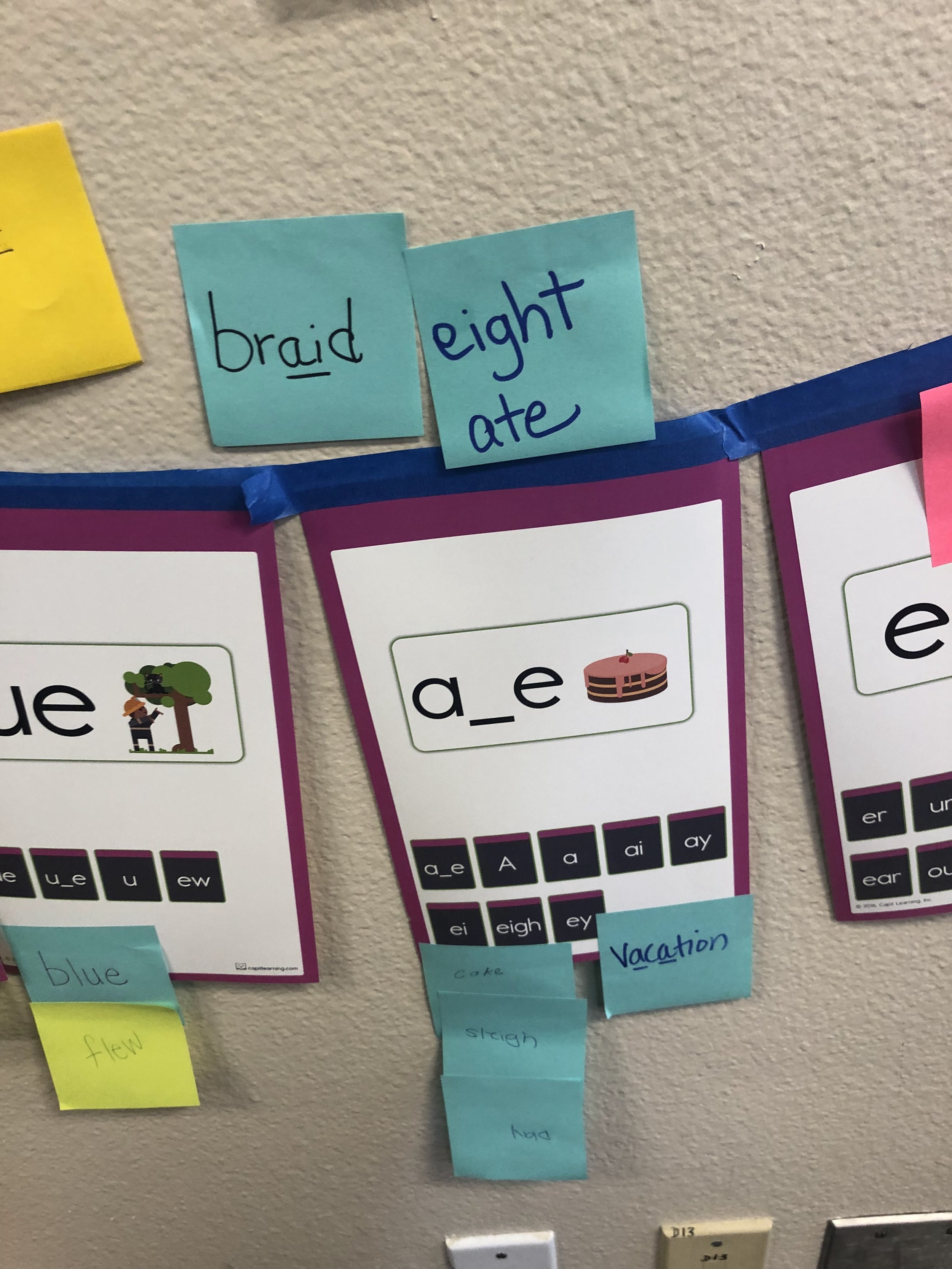The CAPIT Reading Sound Wall
Create a Sound-to-Print Environment™ in the classroom with the CAPIT Sound and Spelling Cards.
Traditionally, KG and first-grade classrooms are adorned with 26 Alphabet Cards, each card containing a letter in its lowercase and uppercase form (e.g., a, A). These cards reinforce the traditional Print-to-Sound orientation common to all conventional phonics programs of the last 150 years.
The CAPIT Method embraces a Sound-to-Print orientation, and teachers can introduce and reinforce this orientation throughout the day using our Sound and Spelling Cards.
CAPIT has over 40 Sound and Spelling cards (6.5’’ x 10.5’’), each representing a specific phoneme. The cards also display all the various ways we can spell each sound, i.e., all its spelling patterns.
Teachers use our Sound and Spelling Cards to teach and review all 40+ Sounds of the English language and all 180+ Spelling Patterns. As students’ vocabulary grows, students rely on these cards to look up Sounds and the more complex Spelling Patterns.
For example, when a student asks: “Which spelling do I use to spell the sound /k/ in the word school?” the teacher can walk the student over to the Sound and Spelling Card that represents the sound /k/, and point to the “ch” spelling. The teacher can then write the word “school” on a sticky note, underline the “ch” spelling, and stick the note under the /k/ card. The same applies to so-called sight words. These words can and should be decoded and displayed under the appropriate card. For example, the word “the” should be placed under the /th/ card, and the word “are” should be placed under the /ar/ sound.
The CAPIT Sound and Spelling Cards are part of the CAPIT Multisensory Kit™.
Learn how to use our Sound and Spelling Cards to teach students to decode any Sight Word.
FOR TEACHERS IMPLEMENTING THE CAPIT READING CURRICULUM
Our Sound and Spelling Cards bring our Digital Sound Chart to life and onto your classroom walls and immerse students in the Sounds and Spelling Patterns of the English language. Seeing them on the wall and using them to learn to read and spell new words motivates students to progress in the CAPIT Reading Curriculum to collect additional sounds and spellings.
These cards benefit students progressing in CAPIT Reading Levels 2 and 3 as they learn to read and spell digraphs, diphthongs, and high-frequency words.
